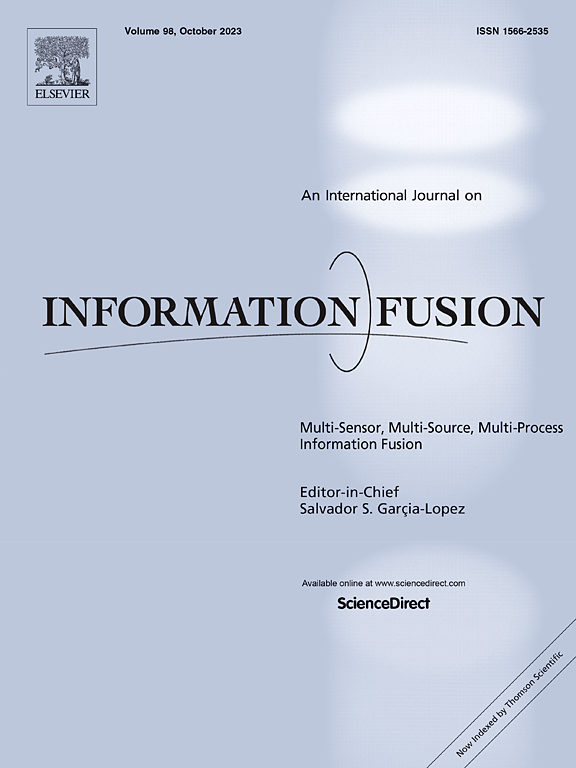CLDTracker:用于视觉跟踪的综合语言描述
IF 14.7
1区 计算机科学
Q1 COMPUTER SCIENCE, ARTIFICIAL INTELLIGENCE
引用次数: 0
摘要
视觉目标跟踪(VOT)仍然是计算机视觉中一个基本但具有挑战性的任务,因为动态的外观变化,遮挡和背景杂波。传统的追踪器主要依赖于视觉线索,在如此复杂的场景中往往会遇到困难。视觉语言模型(VLMs)的最新进展在语义理解任务(如开放词汇检测和图像字幕)方面显示出了希望,这表明它们在VOT方面的潜力。然而,vlm在VOT中的直接应用受到一些关键限制的阻碍:缺乏丰富而全面的文本表示,在语义上捕捉目标对象的细微差别,限制了语言信息的有效使用;无效的融合机制,无法最佳地整合视觉和文本特征,阻碍了对目标的整体理解;在语言领域缺乏对目标进化外观的时间建模,导致最初的描述和物体随后的视觉变化之间的脱节。为了弥合这些差距并释放vlm用于VOT的全部潜力,我们提出了CLDTracker,一种用于鲁棒视觉跟踪的新型综合语言描述框架。我们的跟踪器引入了一个双分支架构,包括一个文本分支和一个可视分支。在文本分支中,我们构建了一个丰富的文本描述包,通过利用强大的vlm(如CLIP和GPT-4V)派生,丰富了语义和上下文线索,以解决缺乏丰富的文本表示。我们进一步提出了一种时间文本特征更新机制(TTFUM)来适应这些跨帧的描述,捕捉不断变化的目标外观并解决缺乏时间建模的问题。同时,视觉分支使用视觉转换器(Vision Transformer, ViT)提取特征,基于注意力的跨模态相关头融合两种模态以实现准确的目标预测,解决了低效率的融合机制。在六个标准VOT基准测试上的实验表明,CLDTracker达到了最先进的(SOTA)性能,验证了利用鲁棒性和时间自适应视觉语言表示进行跟踪的有效性。代码和模型可在https://github.com/HamadYA/CLDTracker上公开获得。本文章由计算机程序翻译,如有差异,请以英文原文为准。
CLDTracker: A Comprehensive Language Description for visual Tracking
Visual Object Tracking (VOT) remains a fundamental yet challenging task in computer vision due to dynamic appearance changes, occlusions, and background clutter. Traditional trackers, relying primarily on visual cues, often struggle in such complex scenarios. Recent advancements in Vision–Language Models (VLMs) have shown promise in semantic understanding for tasks like open-vocabulary detection and image captioning, suggesting their potential for VOT. However, the direct application of VLMs to VOT is hindered by critical limitations: the absence of a rich and comprehensive textual representation that semantically captures the target object’s nuances, limiting the effective use of language information; inefficient fusion mechanisms that fail to optimally integrate visual and textual features, preventing a holistic understanding of the target; and a lack of temporal modeling of the target’s evolving appearance in the language domain, leading to a disconnect between the initial description and the object’s subsequent visual changes. To bridge these gaps and unlock the full potential of VLMs for VOT, we propose CLDTracker, a novel Comprehensive Language Description framework for robust visual Tracking. Our tracker introduces a dual-branch architecture consisting of a textual and a visual branch. In the textual branch, we construct a rich bag of textual descriptions derived by harnessing the powerful VLMs such as CLIP and GPT-4V, enriched with semantic and contextual cues to address the lack of rich textual representation. We further propose a Temporal Text Feature Update Mechanism (TTFUM) to adapt these descriptions across frames, capturing evolving target appearances and tackling the absence of temporal modeling. In parallel, the visual branch extracts features using a Vision Transformer (ViT), and an attention-based cross-modal correlation head fuses both modalities for accurate target prediction, addressing the inefficient fusion mechanisms. Experiments on six standard VOT benchmarks demonstrate that CLDTracker achieves State-of-The-Art (SOTA) performance, validating the effectiveness of leveraging robust and temporally-adaptive vision–language representations for tracking. Code and models are publicly available at: https://github.com/HamadYA/CLDTracker.
求助全文
通过发布文献求助,成功后即可免费获取论文全文。
去求助
来源期刊

Information Fusion
工程技术-计算机:理论方法
CiteScore
33.20
自引率
4.30%
发文量
161
审稿时长
7.9 months
期刊介绍:
Information Fusion serves as a central platform for showcasing advancements in multi-sensor, multi-source, multi-process information fusion, fostering collaboration among diverse disciplines driving its progress. It is the leading outlet for sharing research and development in this field, focusing on architectures, algorithms, and applications. Papers dealing with fundamental theoretical analyses as well as those demonstrating their application to real-world problems will be welcome.
 求助内容:
求助内容: 应助结果提醒方式:
应助结果提醒方式:


